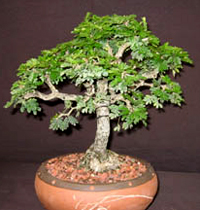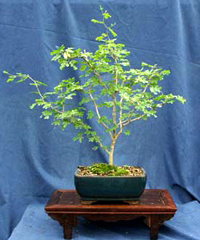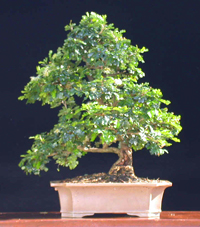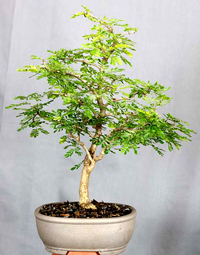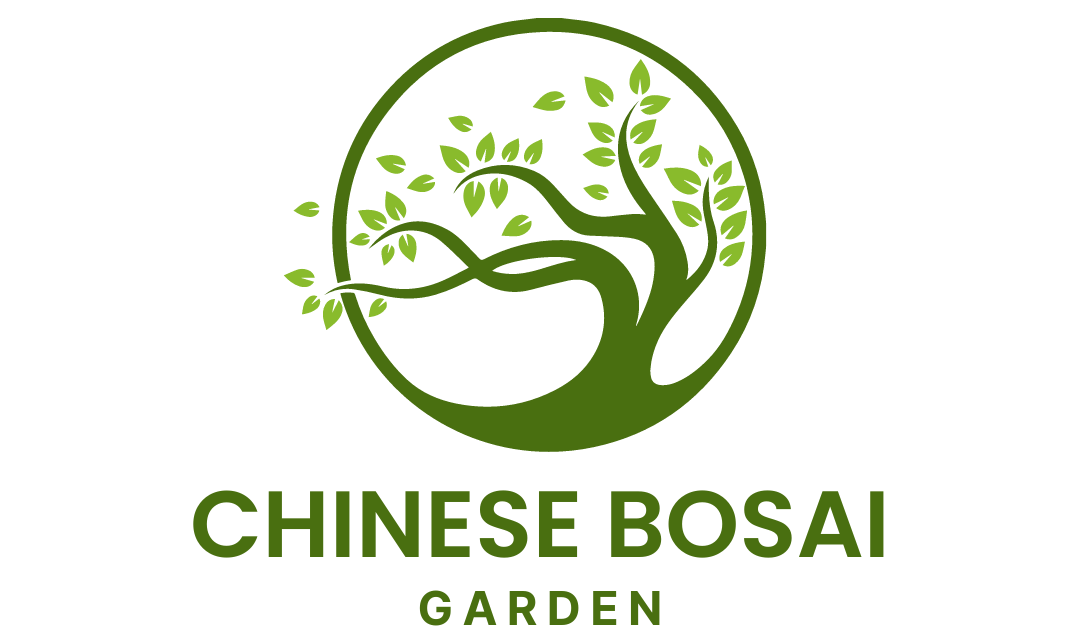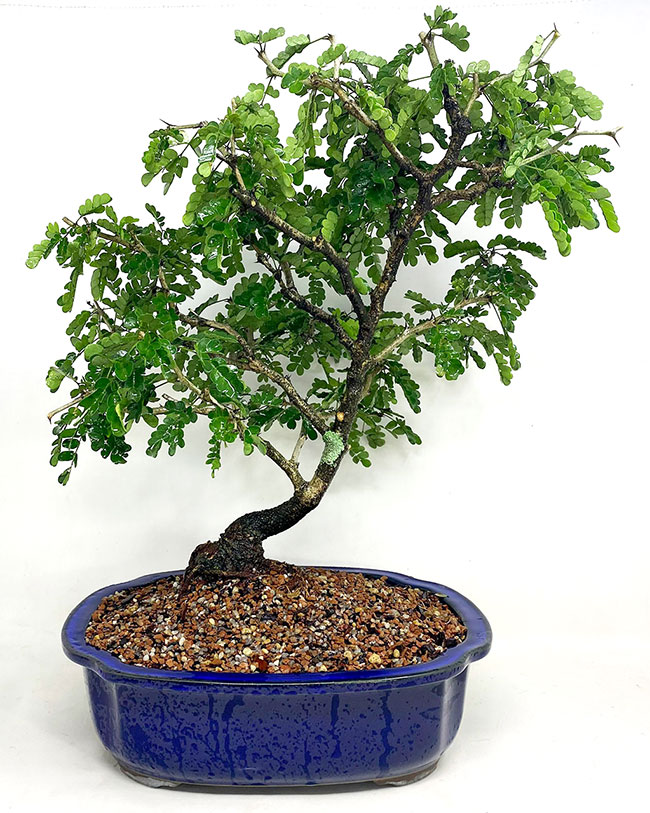
The Texas Ebony Bonsai Tree, scientific name Pithecellobium flexicaule, is an evergreen that is ideal for use in dry, desert climates. In the wild, it can be found on sandy clay loams, clays, and thin, hard limestone.
It produces creamy fragrant flowers that attract bees. Its seeds are edible and are used as a coffee substitute. Great for indoors.
Additional Information
Family: Mimosaceae
Scientific name: Pithecellobium flexicaule
Common Names: Texas Ebony, Mexican Ebony, False Acacia, Ebano, Ebony Blackbeard, Ebony Apes-earring.
Origin: Native to parts of Texas and Northern Mexico.
Appearance: It is an evergreen with short branches and dark green leaves that are made up of clusters of small, shiny leaflets. Branches are highly spined and grow in a distinctive zig‐zag pattern.
Flowering: In late winter and early spring, it produces dense, plume-like spikes of very fragrant, light yellow flowers that are similar to bottle brush trees.
Flowers are followed by brown, thick, woody, long, curved pods with a few hard, marble-sized seeds. These seeds are edible and are used as a coffee substitute.
Outdoor/Indoor Use: Both.
Light Requirements: Full sun to partial shade.
Water Requirements: It adapts very well to dry, hot climates and can tolerate drought for a short period of time when fully established.
Hardiness: Grows best in the USDA Zones 9b – 11. Can tolerate cold weather down to 40F.
Insects and Diseases: No pests or diseases are of major concern.
Propagation: By seed.
